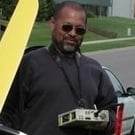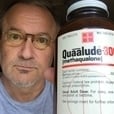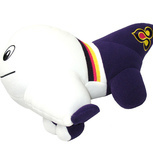Retained
-
Member Title
Senior Member
Personal Information
-
Location
High above Boulder
Recent Profile Visitors
21460 profile views
-
Yes, the main board is new in both the oR and the Signature (Deluxe versions), and it is nearly identical in both. The performance is quite different though due to the power supply in the Signature and the fact that it has a real chassis (think vibration control and lower processor temperature) and the close coupling between the power supply and the main board: digital products perform best with ultra low power supply impedance, and external supplies make this almost impossible to achieve due to the impedance of the connecting cable between devices and the connectors themselves.
-
I am not sure of the question, but here is the news on Signature Rendu deluxe Completely new main board, with a new, better, switch chip, much improved clock distribution circuit, and various other small improvements. The power supply improvements include new refinements in the transformer secondary damping circuit, and the final decoupling filter before the discrete regulator circuit. Generally speaking, the Signature Rendu is the flagship product of Sonore. The Signature includes a very high quality, made in the US chassis, which results in much better control of vibrations, it includes a no compromise power supply design using the best parts available, including a custom built, made in the US, transformer designed specifically for this product, and a discrete regulator circuit which performs at a lower noise level and lower output impedance than any IC based circuits can. Internally, the AC side of the product (AC input wiring, filtering, and transformer) is shielded for both RF and EM from the signal processing and DC power side of the component. The Signature Rendu is designed to achieve the best possible performance without concern for compromise regarding parts quality costs, etc. Each unit is hand built and tested one at a time here in the US.
-

Optical Network Configurations
barrows replied to jabbr's topic in Networking, Networked Audio, and Streaming
@SQFIRST, as you have the X-1, a 1Gb device, I assume when you reference using 10 Gb hardware you are talking about using 10 Gb hardware but running it at 1 Gb, at least to the X-1, right? Are you saying you run other Network links at 10 Gb, and only the final link to the X-1 at 1 Gb? I am considering trying some 10 Gb capable hardware, but running at 1 Gb, as I am interested... also to consider is that the Sonore opticalModule Deluxe, which provides the fiber link to my endpoint uses a very good clock (a better clock than what I have seen in 10 Gb commercial hardware), so I also wonder if jitter is the source of the "problem" you hear with 1 Gb hardware then perhaps that "problem" would not be present with a well designed piece of hardware with a very low phase noise clock, even though it nominally is 1 Gb (oM-D). -
Sterling silver is an alloy, usually of copper and silver-why one would want to use such an alloy for a USB signal makes little to no sense. Sterling makes silver stronger, and is used for jewelry and silverware. For USB signal carrying wires, the best conductor is a solid core copper wire, with a heavy plating of the purest silver possible. The reason for this is that the signal is carried on the very surface of the conductor due to its high speed (google skin depth in high speed signals for more info). With a heavy silver plate on a copper wire the signal will be carried entirely via the silver layer, without the additional expense of a full solid core wire of silver.
-
I also saw that you use Roon, right? Roon can convert to DSD 256 and does a decent job of doing so, I expect as well as any streamer's built in oversampling. If you do find that DSD via Roon oversampling sounds best in your system, at that point you might want to consider HQPlayer, as HQPlayer's oversampling to DSD is advanced well beyond anything else-the HQPlayer modulators are really special. I am convert to using HQPlayer oversampling to DSD, so much so that I built a dedicated DAC optimized for doing exactly that.
-
Hi Dale, I am not speaking for John here, but I think it is important to clarify right away a couple of things: Ethernet data jitter has absolutely no correlation to audio jitter which happens in the DAC (not that Ethernet jitter might not, in a very roundabout way, contribute to audio jitter in the DAC): I just want to be sure for everyone reading this that we understand that DAC conversion stage jitter is a very different thing from Ethernet jitter. That is, Ethernet data is not sent as a constant time stream like audio data is from say a USB interface to a DAC conversion stage. Ethernet data is just packets of data, they are not even, necessarily, in order in terms of timing, consider that the data representing the first second of a track might be sent over Ethernet after the data corresponding to the second second of a track (please disregard the units I am using here). So Ethernet timing is not so critical as long as the data gets to where it is going in time (not too late) and for audio data integrity this is never a problem-subtle degradations of sound quality caused by Ethernet transmissions are caused by noise factors, not by jitter per se as it relates to data integrity. My understanding of John's view on Ethernet clock phase noise, is that this phase noise (clock inaccuracy) can create other electrical noise which may make its way to the DAC, causing noise perturbations in the DAC(causing audio jitter, perhaps DAC Vcc fluctuating, and perhaps interference with the analog stage of the DAC as well), and hence degrading sound quality there. As to Ethernet clocking-my (somewhat limited) understanding is that all Ethernet devices work in an asynchronous way-that is they receive data packets into a buffer, and then they re-clock them out of the buffer using their local clock. Ethernet is also a two way system-all devices talk back and forth to each other, making sure all data is accurately received in each device. So this would happen in a switch, in a router, in a WAP. Each Ethernet device does this re-clocking step, all along the way. If we consider streaming music (or video, etc) from Internet sources, of course we can see that every device must re-clock, asynchronously, along the way, or else the accumulated timing errors would become so large that data would never make it intact.
-
This is accurate, but has nothing to do with the topic at hand. Additionally, if the internal DAC clock is really good, great. But if it is not, a DAC may benefit from an external clock which is way better than the internal one. All things being equal though, indeed, for the audio clock, having it being in the DAC as close to the conversion stage as possible, and the dat re-clocked just before the conversion stage via that clock, will be ideal. Hence why async interfaces (async USB, Ethernet) are preferred (where the DAC clock is the master audio clock), again, all things being equal...
-
Hi Peter, not sure what you are asking. All my playback is via HQPlayer, and my optical Ethernet runs to the system, to the (fiber input) Signature Rendu, using HQPlayer NAA protocols. Then from the Signature Rendu USB cable goes to the DAC, which uses a fully isolated (galvanically) USB interface, which indeed runs a 24 MHz XO for the USB transmission. Audio clock is single 45.xxx MHz SC Pure, and audio data (i2s) is re-clocked on the DAC side just before going to the DAC. I can run only a single (audio) clock because all audio is re-sampled to DSD 512 in HQPlayer, and the DAC is optimized for DSD 512 playback. As far as Ethernet protocols go, there are a few, right... Ravenna, UPNP, NAA, Roon RAAT, etc... I am certainly very, very happy with NAA myself, and have no "issues" there.
-
No need. For example, in my system I run a Sonore Signature Rendu with optical Ethernet input. My DAC (DIY DSC-2) has an isolated USB input which is floating: the USB input ground does not connect to the DAC ground or chassis of the DAC at all. So the USB input ground only connects to G at the Signature Rendu. With only a single point of ground reference there is no chance of having a ground loop. This is how an isolated USB input should be implemented. My USB interface is powered from the USB, which is good, as it provides a completely isolated power supply from the DAC, and the Signature Rendu's USB power supply is engineered properly to be ultra low noise and ultra low impedance (it uses two dedicated LT 3045s in parallel). Yes, the source quality will matter in this case, as it always does. The only reason I could think of to run optical USB is if one needed to go a long distance-in my case, the long distance connection travels on fiber Ethernet to my lab room, where the server, switch, router, and opticalModule are located. In the system, the low noise area, there is just the Signature Rendu and its external Well Tempered Master Clock, the DAC, and the amplifier. For sure in saying the problem is solved, I was referring to high end two channel audio systems (no video) using well engineered components. Things like multichannel and Atmos introduce many other variables, and so does video, as it uses different clock rates which alone create additional problems. But for two channel audio, with good engineering, the problem is solved.
-
A problem which does not exist: Fiber Ethernet is ideal for transferring any data content, whether music signals or not. The audio clock should not be considered a "problem" because audio clocking should only be done in the DAC right before conversion. Fiber Ethernet transmits audio data perfectly, without introducing noise artifacts into the DAC, and has no need for an audio clock. The only potential drawback of using fiber Ethernet to bring audio to the DAC, is that the computing power needed to decode it to digital audio is more than that required by, say, Async USB-so the interface itself is a noise source. But this need not be a problem: good engineering can isolate this noise from the DAC's sensitive clock and analog circuitry. The same is nearly true for Async USB: Again, no audio clock in the signal, audio clocking happens only inside the DAC right before conversion. Async USB requires the same isolation from the receiver circuitry to the DAC circuit, but this is well understood now and is easily solved. Of course, by using wires, noise can be introduced into the DAC from the USB connection-again this can be solved via 2 things: a well engineered USB source designed specifically to provide a low noise USB feed, combined with a DAC which properly isolates and re-clocks the digital audio data stream from the USB receiver section. Async USB has the further limitation of only being good for short connections. There is no need for a "new" way to do it, we have "perfect" ways already. What matters is good engineering of the ways we have to eliminate the propagation of noise to the clock, DAC Vc, and analog circuits of the DAC. For example, an Ethernet DAC using optical Ethernet input: The optical Ethernet receiver circuitry needs its own independent power supply, this could be a well engineered low noise SMPS, or if you insist, it could be a well engineered linear power supply with a dedicated transformer. The Ethernet receiver circuitry would then be as well, shielded from the rest of the DAC with a faraday cage, just as the power supplies (generally) should be shielded from the sensitive DAC circuitry. DAC clock is sent to the Ethernet receiver through isolation, and the i2s output comes out of the Ethernet receiver through isolation. The i2s data is then re-clocked by the DAC clock, directly before conversion. This is pretty much the same way well engineered async USB works, albeit without the advantage of fiber isolation from the source. This is a solved "problem" and does not require the development of some new way of doing things. AES and SPDIF are technically flawed because they attempt to provide the clock from the source. HDMI is total mess, and requires outstanding engineering solutions because it attempts to transfer so many differing signals on a single cable.
-
Yours is almost built, just waiting on our capacitor order to arrive from Germany, FedEx mis-sorted the package...If all goes well, it will ship on Monday before I take a little break here.
-
Update: Sonore VP has tried the Synergistic Master Fuse, and reports it does result in an improvement. As always, I am hesitant to recommend it due to the very high price-but if everything else in your system is "perfected", perhaps a Master fuse is what you need to gain that last little bit of sonic bliss. Sonore will offer the Master Fuse as a special order option for the Signature. Please note that it is unlikely that we would stock these fuses due to the cost, but we will special order them for new Signature builds if requested.
-

The Mola Mola Tambaqui DAC
barrows replied to Music Enthusiast's topic in DAC - Digital to Analog Conversion
1. If one has a poorly designed DAC, with a poorly designed analog stage and output filter, it is possible that a preamp with a good RF filter on its input could improve sound quality. Of course, the better solution would be to not purchase the poorly designed DAC! From what I have heard with the Tambaqui running amp direct, and from what I know of Mr. Putzeys' engineering chops, I would not expect the Tambaqui to have this kind of a problem. 2. Digital attenuators will reduce low level resolution at very low volumes, but consider: the volume level has to be really low for this to happen, unless the gain matching of your amp to source is way off, this should not ever present a problem. Also consider-at these very low listening levels, the very low level information lost is not anywhere near audible anyway. I hope that makes sense... What I am saying is, that what you lose at high levels of attenuation is low level details which you cannot hear at very low playback levels anyway (the low level signals have dropped well below the noise floor). Also consider, that analog volume controls have their own problems, especially at low levels-they are not perfect, the resistors add distortion and noise (thermal noise), and they add more distortion and noise the more one attenuates the signal. Analog volume controls just add a bunch of resistance to the signal path-this is not ideal! Digital volume controls, when well implemented are superior, as long as the system gain matching is reasonable-and by reasonable I mean you are not listening at -100 dB on your volume control, or something crazy like that. Also consider, if you like the sound of the Tambaqui, a bunch of digital processing of the signal does not bother you-the Tambaqui is always doing a bunch of DSP on the signal with its asynchronous SRC, etc. The digital volume control is just part of all that processing, singling out volume control as somehow "evil" is nonsense-like anything what matters is how well that processing is done, again I defer to Mr. Putzeys' expertise here. Let's also consider that nearly all contemporary recordings, and re-masters, etc are mixed in the digital domain, using digital level controls, and have been so for many, many years now. -

The Mola Mola Tambaqui DAC
barrows replied to Music Enthusiast's topic in DAC - Digital to Analog Conversion
1. "Galvanic Isolation" does not mean that all high frequency noise cannot pass the isolation-this is important to understand. The same is true for "isolated" USB inputs. While I am in favor of designers using isolated inputs, having them does not eliminate noise, it reduces noise. We are talking about high frequency noise here, which is high enough in frequency to be broadcast into the air as RF. So, internally, it can be floating around inside the DAC, and be picked up by ground planes, analog output stages, etc. Additionally, some noise will pass across a "moat" due to capacitive coupling, or through isolation transformers (in the case of the Ethernet jack) via the same capacitive coupling. So, "isolation" helps, but does fully address the potential problem. I have never experienced an "isolated" DAC input which did not perform better when fed via a well designed low noise source, be it SPDIF/AES (usually transformer isolated), USB (usually isolated by various chip isolators), or Ethernet (usually isolated by tiny transformers in the Jack, and/or a transformer based chip). This is why optical fiber Ethernet can be a big benefit, despite the "isolation" incorporated in a given component. 2. Given the robustness of the Tambaqui's output stage, I very much doubt that there would be any benefit to adding a preamp if you have no need for one (unless you want to add something to the sound, like tube color or something like that). While some DACs do benefit from having a preamp, those DACs which benefit do so usually because their output stage is not "beefy" enough in terms of current headroom- I have tested this pretty extensively. Remember, a distributor, or dealer, is always going to be happy to sell you another component. 3. The Makua is a very fine preamp/DAC, and if you need the input switching, and/or have analog sources, or want to add a turntable set up (with the very fine phono stage onboard the Makua) go for it. But If you just have the single DAC source, I would not bother. There is no significant difference in terms of the output stage of the Makua vs. the output stage of the Tambaqui. If you are still curious... be sure to do a precise level matched A/B comparison in your system-it must be precisely level matched, so make measurements to be sure. First listen sighted and determine if you hear differences, and learn what you think those differences are, and then do a blind test and make sure you can pick out the winner at least 75% right, to be sure there is a real valid difference.










